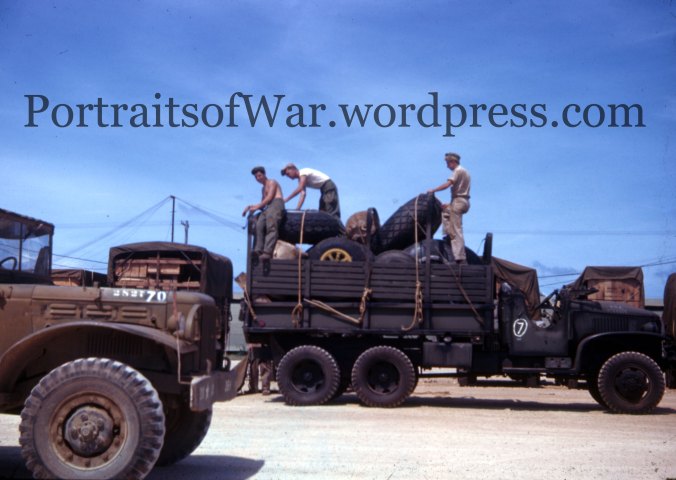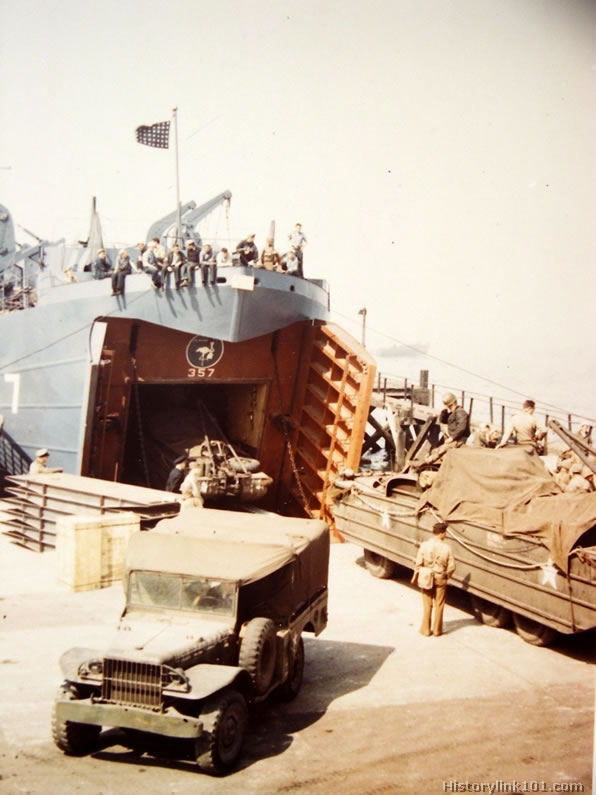I know that the great quantities of U.S. armor in WW II were Olive Drab, and
I have a good inkling of what that Olive Drab was. There is another colour that has puzzled me for quite some time though, infrequently encountered--
on the Internet as colour photos of actual WWII tanks, and also equally rare pics of modelers tanks.
It is a very "Brownish" olive drab type colour. Not
Khaki, not tan-green, but very much more brownish. It is not standard dark
olive drab with just white applied! Is this field drab? I thought that was only
for uniforms and such. It is more of a brown drab than a Khaki drab also.
Any and all info would be greatly appreciated.
Hosted by Darren Baker
An Infrequent U.S. tank colour
paintMixer

Joined: October 11, 2014
KitMaker: 71 posts
Armorama: 71 posts
Posted: Sunday, March 15, 2015 - 11:17 PM UTC
highway70

Joined: November 27, 2004
KitMaker: 322 posts
Armorama: 267 posts

Posted: Monday, March 16, 2015 - 04:20 AM UTC
Simple answer - US Army vehicles in WW2 were Olive Drab
but then it gets complicated
Article by Steve Zaloga
http://www.militarymodelling.com/news/article/olive-drab/4536/
wedgetail53

Joined: October 02, 2008
KitMaker: 658 posts
Armorama: 629 posts

Posted: Monday, March 16, 2015 - 04:36 AM UTC
George
I think you will find that, as said above, all US WW2 vehicles were Olive Drab, full stop, bearing in mind Steve Zaloga's comments.
What has probably happened is that the picture has a colour cast caused by any one of a number of factors, not least of which is the age of the picture.
The best reference that I know of for Olive Drab is in Steve's book "Modelling US Armour of WW2"
Regards
Rob
I think you will find that, as said above, all US WW2 vehicles were Olive Drab, full stop, bearing in mind Steve Zaloga's comments.
What has probably happened is that the picture has a colour cast caused by any one of a number of factors, not least of which is the age of the picture.
The best reference that I know of for Olive Drab is in Steve's book "Modelling US Armour of WW2"
Regards
Rob
highway70

Joined: November 27, 2004
KitMaker: 322 posts
Armorama: 267 posts

Posted: Monday, March 16, 2015 - 06:10 AM UTC
There was a thread some years ago where a member discussed the effects of background and sun angles on the apparent color of a vehicle. He illustrated it with photos of a modern Mercedes truck taken in different locations and lighting conditions. Useful info - anyone have link to it.

cabasner

Joined: February 12, 2012
KitMaker: 1,083 posts
Armorama: 1,014 posts

Posted: Monday, March 16, 2015 - 06:49 AM UTC
Hi there!
I have the Zaloga book, and have read, several times, the section on Olive Drab. On my first (and thus far, only) WWII US tank, a Sherman (hard to believe, eh?), I painted it with Tamiya Olive Drab (XF-62), the color that Steve highly recommends. I decided, not even sure why, to add an overall brown wash to the OD. At first, I thought I really had screwed up. But after the wash dried, I got what I think is an amazing looking OD. As Steve points out, OD is NOT olive green, nor dark green, nor any green at all. It is/was a dark mud-like brownish color. I think my Tamiya OD with the brown wash looks perfectly like some photos of WWI tanks.
I have the Zaloga book, and have read, several times, the section on Olive Drab. On my first (and thus far, only) WWII US tank, a Sherman (hard to believe, eh?), I painted it with Tamiya Olive Drab (XF-62), the color that Steve highly recommends. I decided, not even sure why, to add an overall brown wash to the OD. At first, I thought I really had screwed up. But after the wash dried, I got what I think is an amazing looking OD. As Steve points out, OD is NOT olive green, nor dark green, nor any green at all. It is/was a dark mud-like brownish color. I think my Tamiya OD with the brown wash looks perfectly like some photos of WWI tanks.

SSGToms

Joined: April 02, 2005
KitMaker: 3,608 posts
Armorama: 3,092 posts

Posted: Monday, March 16, 2015 - 08:01 AM UTC
Olive Drab is a combination of black and yellow ochre. Depending on the light, it looks green or brown, but has neither color in it.

RobinNilsson

Joined: November 29, 2006
KitMaker: 6,693 posts
Armorama: 5,562 posts

Posted: Monday, March 16, 2015 - 03:01 PM UTC
Quoted Text
Olive Drab is a combination of black and yellow ochre. Depending on the light, it looks green or brown, but has neither color in it.
We-ell, sort of depends on what was used as "black" pigment. Some blacks are very dark browns, others are pure black, some are very dark blues ..mix with yellow ochre ...
/ Robin
Posted: Monday, March 16, 2015 - 04:46 PM UTC
Quoted Text
...depends on what was used as "black" pigment.
Not to get too far into technicalities yet Robin has a point there. Back when I did etching and commercial printing, IIRC, black ink was categorized by "vine" and "bone". Those where the materials burned to produce the pulverized carbon used as pigment. Each gave a slightly different 'black'.

Biggles2

Joined: January 01, 2004
KitMaker: 7,600 posts
Armorama: 6,110 posts

Posted: Monday, March 16, 2015 - 06:41 PM UTC
There is no natural "black" pigment. Black is always a mix of other colors, and usually contains an amount of blue, which is why the yellow in ochre, when mixed with the blue in black, gives a slightly greenish cast in OD. When US OD fades, it goes to a definite brownish cast. British OD, which was meant to be the equivalent of US OD started off as a very similar color, but because it was mixed with a different combination of colors, when faded, maintained it's greenish hue. 


Frenchy

Joined: December 02, 2002
KitMaker: 12,719 posts
Armorama: 12,507 posts

Posted: Monday, March 16, 2015 - 09:14 PM UTC
Some food for thought 

H.P.


H.P.
Biggles2

Joined: January 01, 2004
KitMaker: 7,600 posts
Armorama: 6,110 posts

Posted: Monday, March 16, 2015 - 09:20 PM UTC
Must be the light!  Possibly the Dodge is an older paint job, or just sat around in a vehicle park for months in England, which faded the paint.
Possibly the Dodge is an older paint job, or just sat around in a vehicle park for months in England, which faded the paint.  There's another color photo, which I can't find, of a Dodge 3/4 ton beside a DUKW on a Normandy beach, with the Dodge being brownish OD and the DUKW being normal OD.
There's another color photo, which I can't find, of a Dodge 3/4 ton beside a DUKW on a Normandy beach, with the Dodge being brownish OD and the DUKW being normal OD.
 Possibly the Dodge is an older paint job, or just sat around in a vehicle park for months in England, which faded the paint.
Possibly the Dodge is an older paint job, or just sat around in a vehicle park for months in England, which faded the paint.  There's another color photo, which I can't find, of a Dodge 3/4 ton beside a DUKW on a Normandy beach, with the Dodge being brownish OD and the DUKW being normal OD.
There's another color photo, which I can't find, of a Dodge 3/4 ton beside a DUKW on a Normandy beach, with the Dodge being brownish OD and the DUKW being normal OD.
Frenchy

Joined: December 02, 2002
KitMaker: 12,719 posts
Armorama: 12,507 posts

Posted: Monday, March 16, 2015 - 09:39 PM UTC
Quoted Text
There's another color photo, which I can't find, of a Dodge 3/4 ton beside a DUKW on a Normandy beach, with the Dodge being brownish OD and the DUKW being normal OD.
This one ?

Here's the full size version of the one in my previous post (taken in the PTO) :
https://portraitsofwar.files.wordpress.com/2012/04/pto-color008.jpg
H.P.
paintMixer

Joined: October 11, 2014
KitMaker: 71 posts
Armorama: 71 posts
Posted: Monday, March 16, 2015 - 10:39 PM UTC
Of these few examples found so far, and it does indeed seem to be "an infrequent" occurrence---I would say that some are the result of strong sunlight on standard Olive Drab as defined; and the others, perhaps that same Olive Drab painted over vehicles that might have been some other colour first---giving that particular hue; or perhaps indeed--an entirely different colour than OD--that was for some reason used on a few vehicles for some reason or other. That colour whether it is due to sunlight, or a different paint than OD, or added to OD--would I suppose be field drab, or brown drab.

KurtLaughlin

Joined: January 18, 2003
KitMaker: 2,402 posts
Armorama: 2,377 posts

Posted: Tuesday, March 17, 2015 - 02:01 AM UTC
People get wrapped around the axle and whipped into virulent rages because they take Steve's article and misread it to say that all OD vehicles exactly matched the standards and should look exactly the same, at all times throughout their life. What he is saying is that OD specifications give you the right starting point for variation. If you were to graph paint jobs based on a particular look compared to the standard or "normal" look (more brown/less brown, more green/less green, more faded/less faded, more dusty/less dusty, older/newer, etc.) with the height of the bar representing the number of paint jobs that looked a particular way, you'd get this:

The graph is a handy way of showing that most paint job colors are close to the standard and that the farther off standard the color, the rarer it is. It also points out that a wide (but limited) range of variation is possible, but the starting point is the same. You are going to get a more realistic result by tweaking the standard than by starting at a completely different point on the color spectrum and trying to say "anything is possible".
KL

The graph is a handy way of showing that most paint job colors are close to the standard and that the farther off standard the color, the rarer it is. It also points out that a wide (but limited) range of variation is possible, but the starting point is the same. You are going to get a more realistic result by tweaking the standard than by starting at a completely different point on the color spectrum and trying to say "anything is possible".
KL
 |










